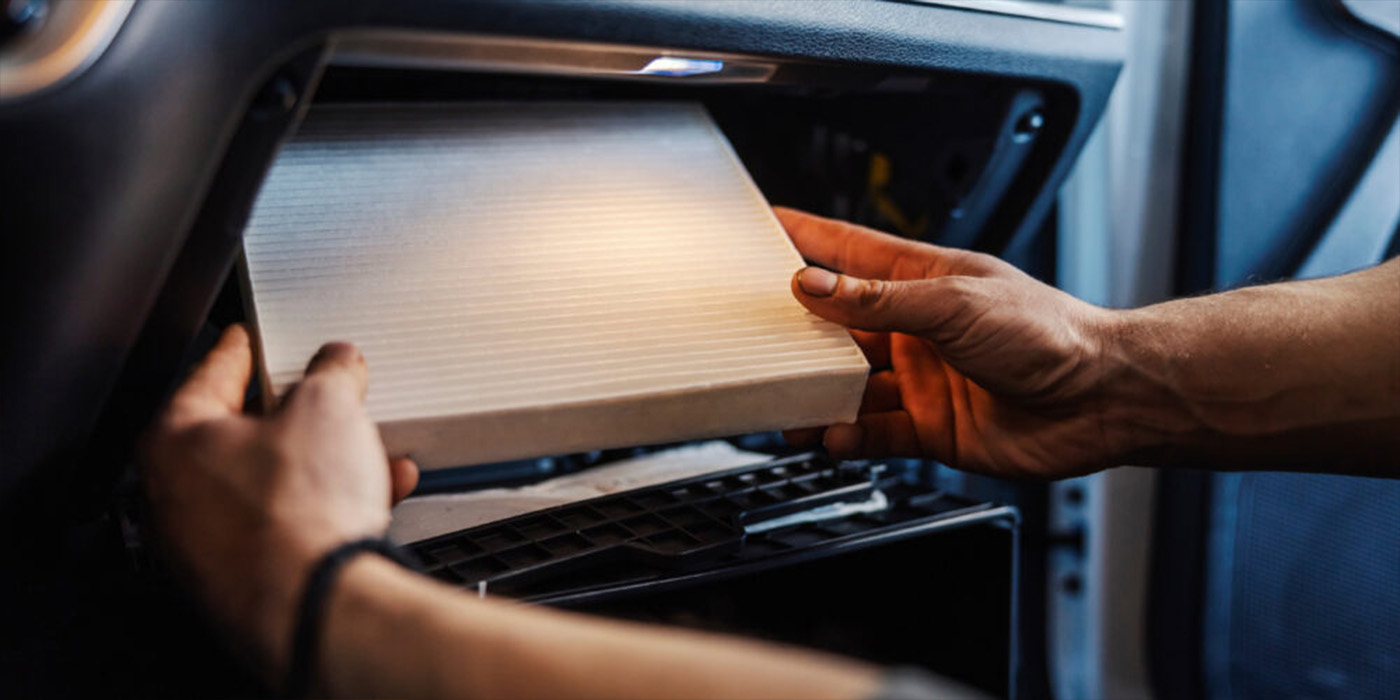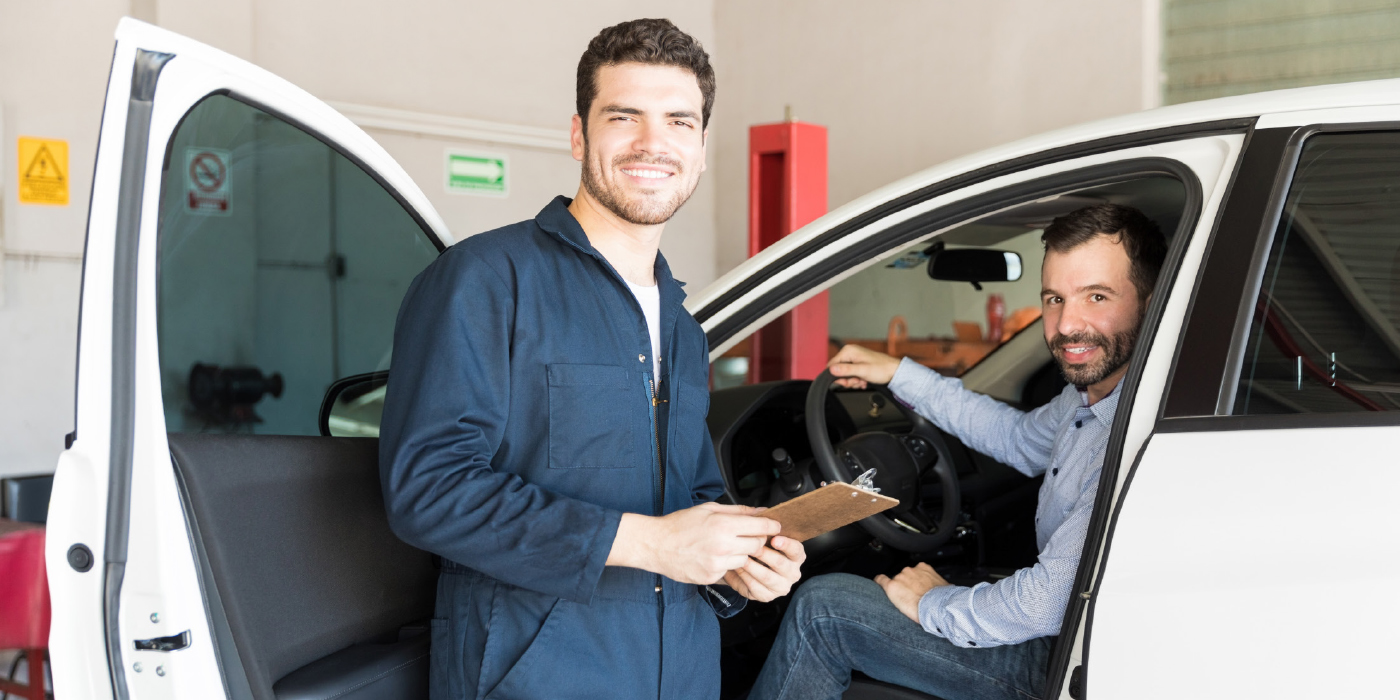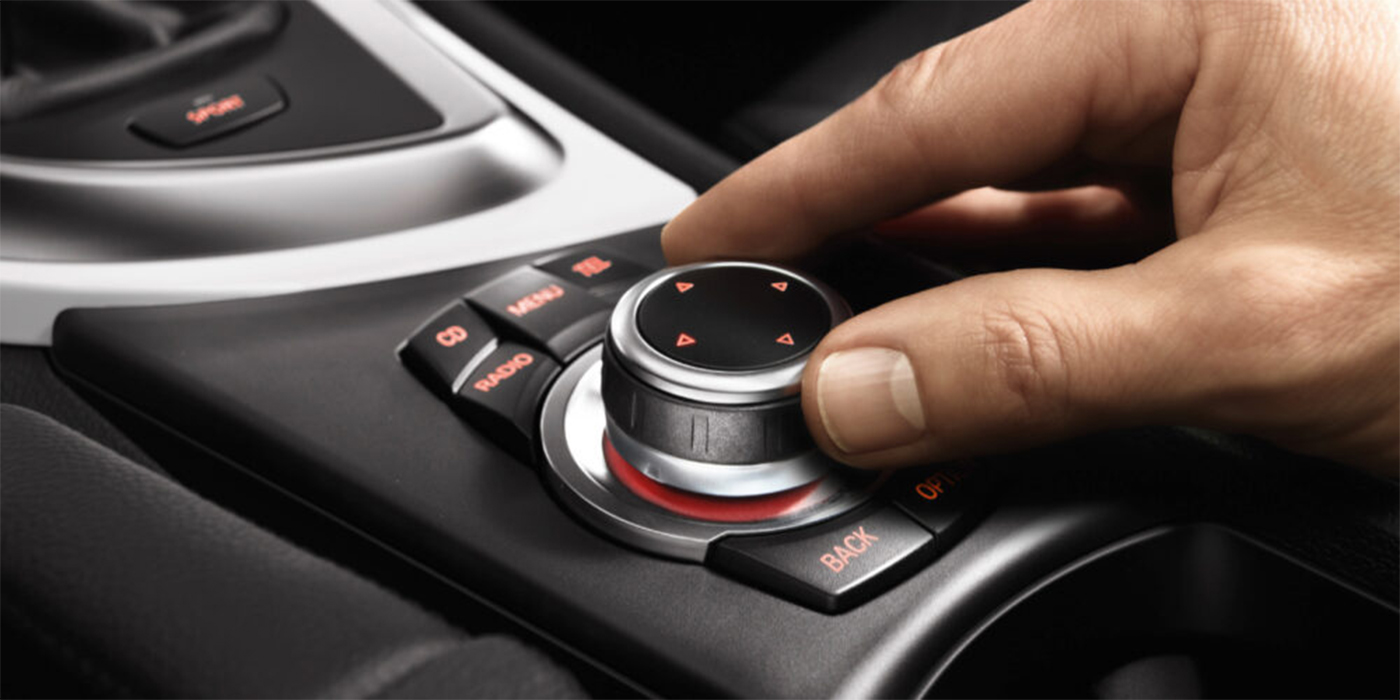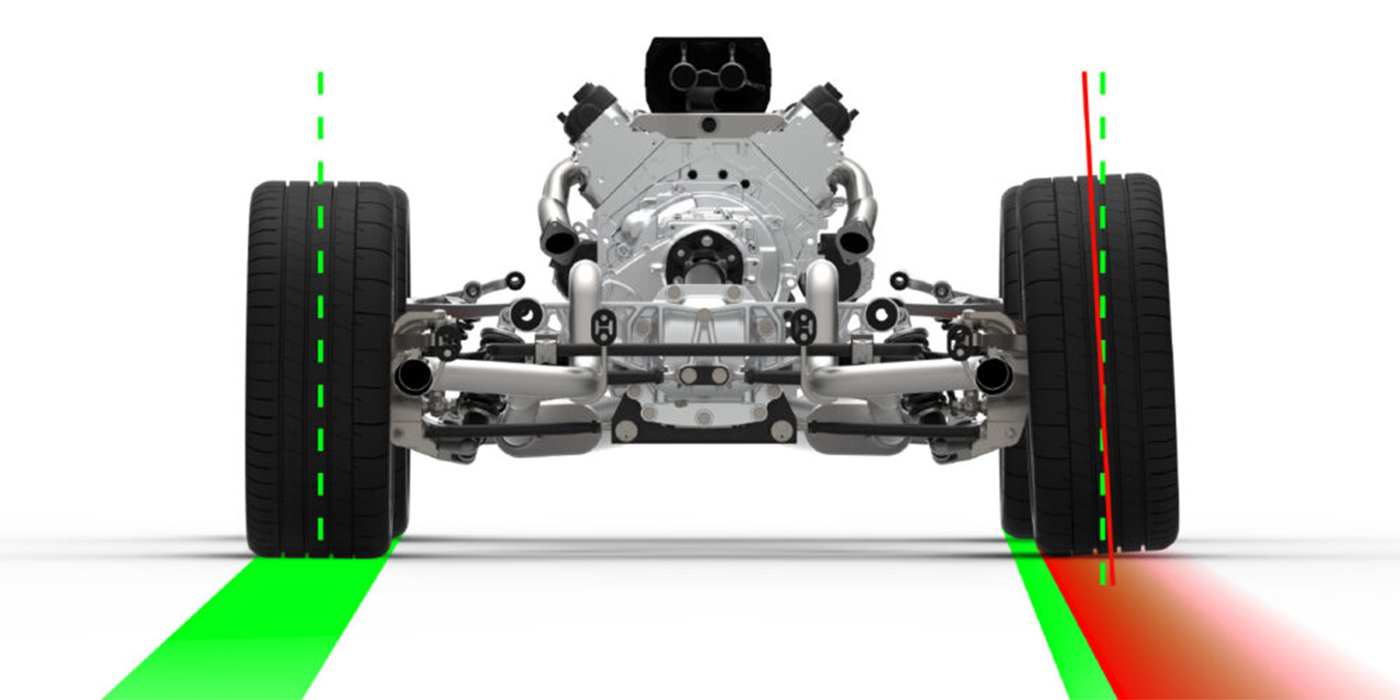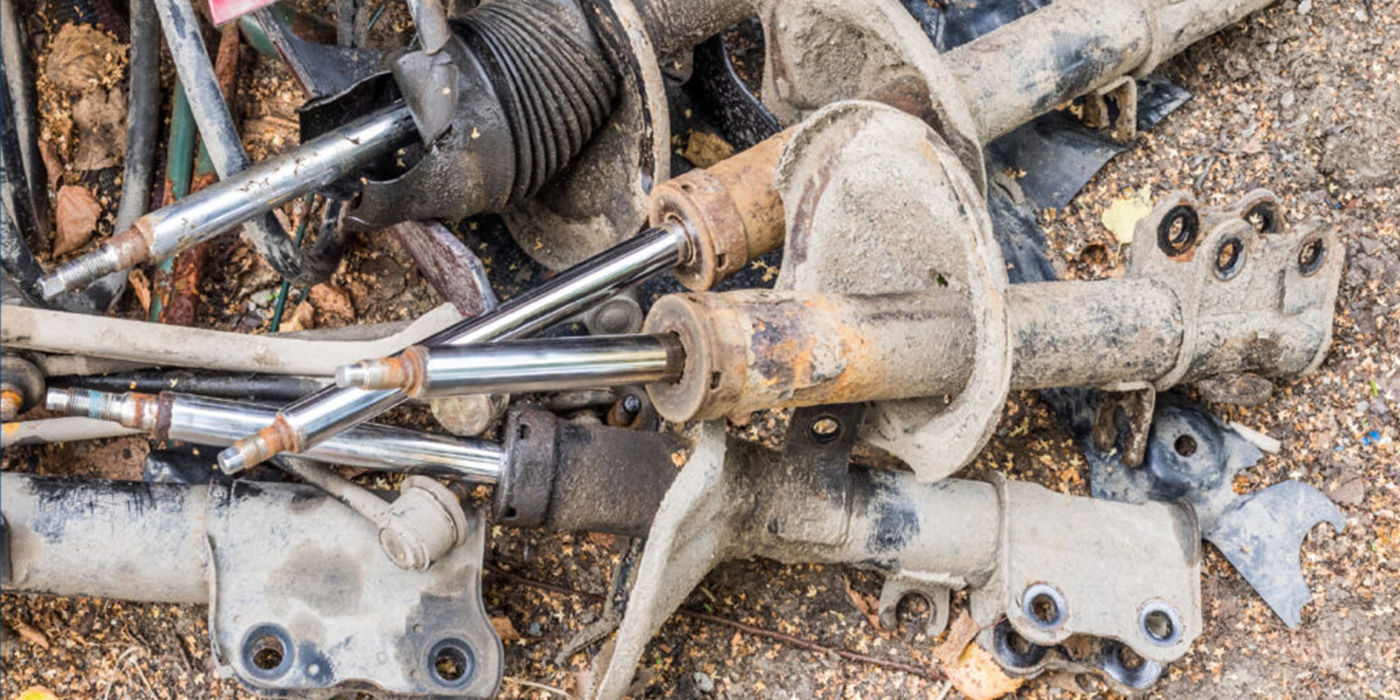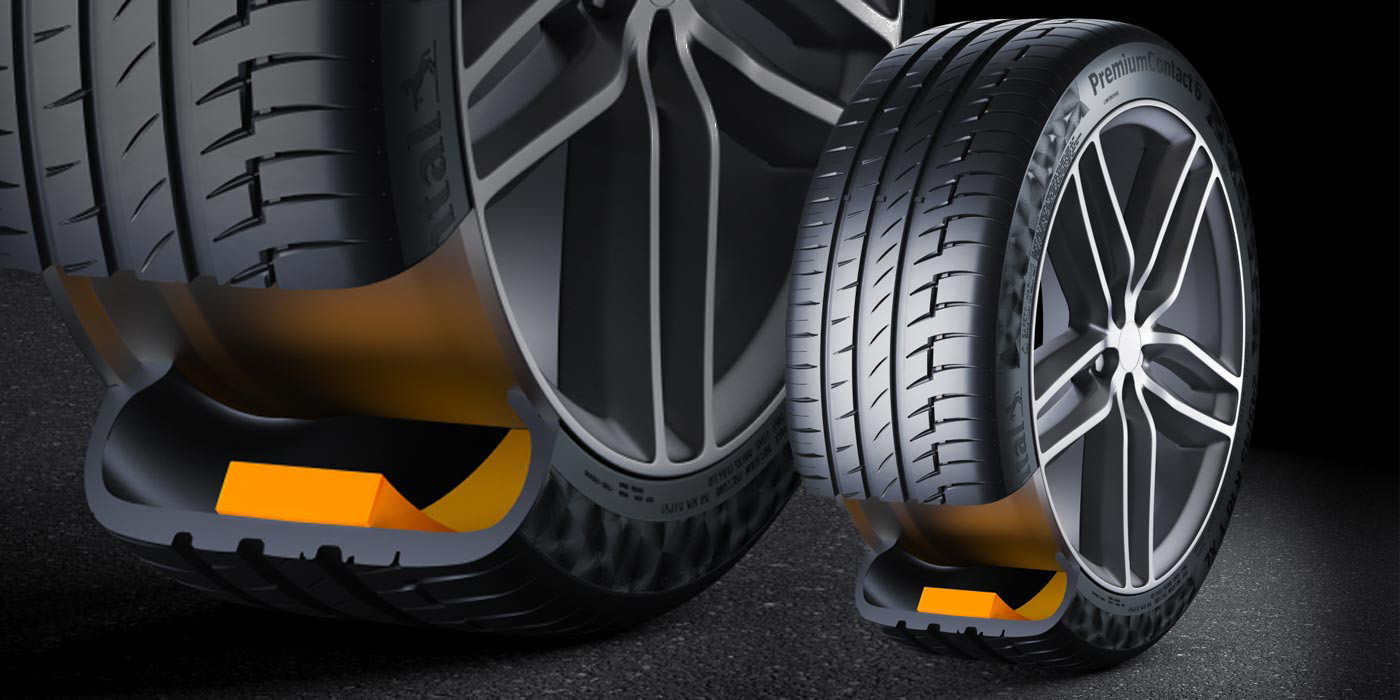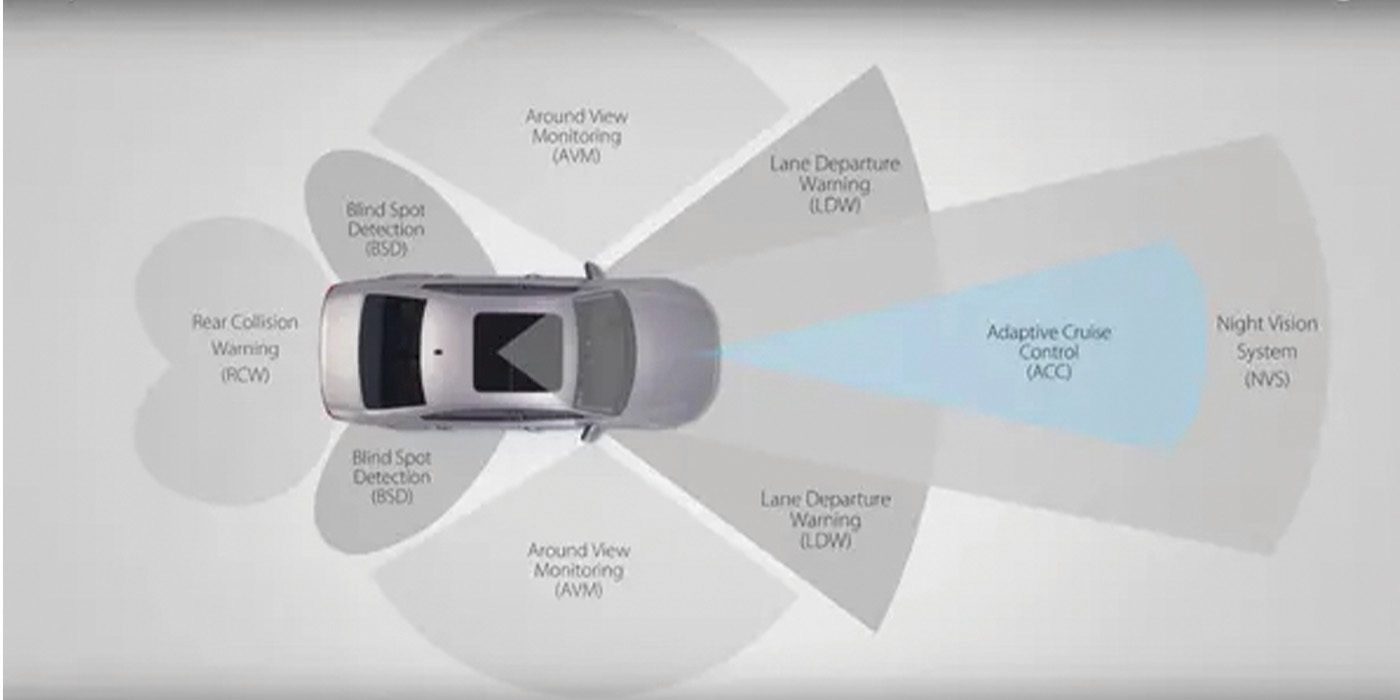By Uwe Kleinschmidt
CEO
AutoVitals.com
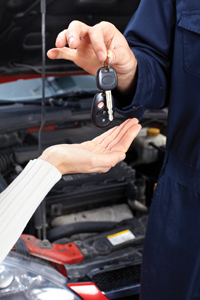 Over the past few months, we’ve talked about how you can leverage web technologies to enhance customer service, increase customer satisfaction and improve your bottom line in the process.
Over the past few months, we’ve talked about how you can leverage web technologies to enhance customer service, increase customer satisfaction and improve your bottom line in the process.
In this article, I want to spend some time focusing on what our network of shops has found to be the single most important touch point during a first-time customer’s experience: when the customer picks up his/her vehicle.
Though many shops treat vehicle pick-up as a “get ’em in, get ’em to pay and get ’em out fast” process, what our network of shops have found is that vehicle pick-up time provides a unique opportunity to deepen the customer relationship, setting the stage for his/her next visit and filling your calendar with future service appointments.
The Vehicle Pick-Up Experience
The counter experience — and especially the counter experience that occurs after a customer’s first appointment with your shop — is the most personal experience for the customer. Based on the info you provide them with at the counter, as well as the overall customer service they receive, they decide right then and there if they’ll ever bring their vehicle back to your shop. Certainly, this is an important time to showcase your expertise, educate the customer as to what services his/her vehicle may need next, and how his/her personal driving profile may impact upcoming service due dates. But you should also be laying the groundwork for his/her next appointment.
Web technologies can help you optimize the vehicle pick-up experience. By using vehicle pick-up time as an opportunity to prepare your customers for what happens next, you’ll be transforming the tried-and-true service reminder process from one that is generic and easy-to-overlook, to one that is customized and anticipated.
Use Vehicle Pick-Up Time to Set the Expectation for Service Reminders
Many of today’s shop owners mail postcards or send e-mails with service reminders to customers. But with customers’ mailboxes and inboxes being bombarded with messages, how can your message stand out? It all starts with setting the stage for the service reminder process during vehicle pick-up. Here are a few best practices based on what we’ve seen throughout our shop network:

• Set the expectation during pick-up that the customer will be receiving a service reminder. In essence, you’re preparing your customer to keep an eye out for that notice, helping it to stand out when it does arrive.
• Let the customer know about the timing that his/her service reminder will be arriving (e.g. two weeks prior to service date, etc.). Giving your customer a heads up that they’ll be receiving an e-mail from you means that when it does arrive, it’s something that’s anticipated rather than just another e-mail. Shop owners in our network who regularly do this report that their overall e-mail open rate has increased an average of 15-20%.
• Provide vehicle-specific recommendations at vehicle pick-up and in service reminders. To further increase your e-mail open rate, customize your recommendations to be specific to the vehicle versus providing generic “catalog” recommendations.
• Ensure that service reminders don’t have any surprises. If Mr. Smith receives a service reminder recommending a transmission service, and it’s the first time he’s heard about it, he’ll likely wonder why the service advisor didn’t mention it when he picked up his car from his previous appointment. Keep your communication consistent at vehicle pick-up and in your service reminders, and you’ll create a stronger sense of trust with your customers.
Setting the Service Reminder Stage at Vehicle Pick-Up Pays Off
If you’re taking advantage of vehicle pick-up time as an opportunity to set the stage for the next appointment, you’ll be able to see it in your numbers. For example, let’s take a look at the results of a typical service reminder campaign within our network of shops.
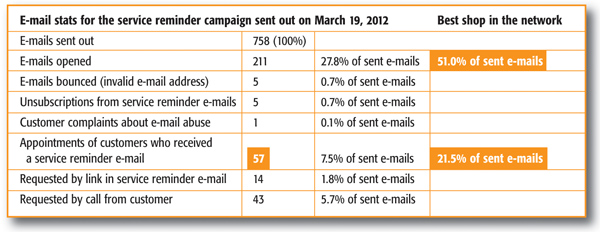
As you can see from the numbers in Chart 1, this single service reminder campaign garnered 57 appointment requests out of the 211 people (or 27.8%) who opened the e-mail. Based on that, you can imagine the number of appointment requests received by the shop that had a 51% e-mail open rate. And, it’s easy to see how a little bit of customer preparation at vehicle pick-up can pay off in future appointments.
The ROI Reason to Consider Call Campaigns
Postcards and e-mails aren’t the only ways to nurture and maintain your relationship with your customer. In fact, for an experience that’s almost as personal as the counter experience, you may want to consider call campaigns.
I can hear you now: “Call campaigns are a ton of work! I’d rather just send out some postcards.” And if you compare only the amount of time each type of campaign takes, you’re correct — making calls is a more time-consuming activity than auto-generating postcards. However, when you realize the return on investment from call campaigns, you may just change your tune! Consider the metrics garnered from a typical call campaign within our network of shops.
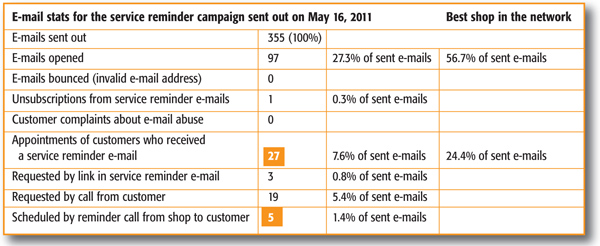
As you can see in Chart 2, this shop used call campaigns as a way to grow its appointments by 20%. “Okay, 20% more appointments is great,” you say, “but how many calls did they make and how much time did it take to get that 20% increase?” Excellent question — and I think you’ll like the answer. On average, to see this kind of response, our shop network reports that they spend approximately 45 minutes making 10 to 15 phone calls.
At an average ticket value of $378, these 10-15 phone calls effectively generated additional revenue of $1,890 — certainly not bad for 45 minutes of work in my book! Do you run a postcard campaign delivering a ROI of even the same magnitude?
However, to get these kinds of results, you’ll need to ensure that your call campaigns are personalized. Since nobody can possibly memorize every customer’s service history and vehicle specifics, the right tool is needed, which not only allows you to access this information right at your fingertips, but also allows logging of the conversation for future interaction and the ability to measure campaign success so adjustments for future improvements can be made.
Leveraging Web Technologies at Vehicle Pick-Up and Beyond
Over the past several months, we’ve covered three very distinct phases of customer interaction, and have explained the best ways to leverage web technologies during each phase — including the vehicle pick-up phase, where you have the chance to set the tone for what happens next.
One very important web technology we haven’t covered yet is social media, and how you can maximize its value to improve customer satisfaction, increase customer retention rates and grow shop revenue.
Stay tuned for our next installment in the July/August 2012 issue of Shop Owner, when I’ll talk about best practices for social media, compared and contrasted against traditional advertising techniques. If you’re wondering how to figure out the right media mix, you can’t afford to miss it!
Uwe Kleinschmidt is the CEO and founder of AutoVitals in Santa Barbara, CA. The company’s Web-based services focus on the independent automotive repair industry. AutoVitals’ products facilitate highly effective Concierge Auto Repair services, covering all aspects of the service advisor’s interaction with prospective and existing customers. Highly effective and optimized websites, workflow support in the shop, as well as customer retention and social media services are just a few ingredients. He can be reached by visiting blog.AutoVitals.com or calling 1-866-949-2848.

